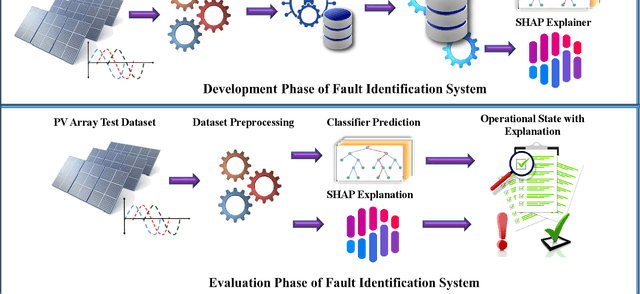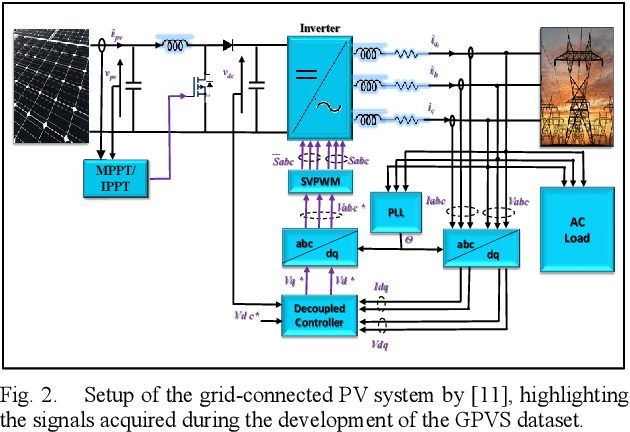Syed Wali
XG-NID: Dual-Modality Network Intrusion Detection using a Heterogeneous Graph Neural Network and Large Language Model
Aug 27, 2024Abstract:In the rapidly evolving field of cybersecurity, the integration of flow-level and packet-level information for real-time intrusion detection remains a largely untapped area of research. This paper introduces "XG-NID," a novel framework that, to the best of our knowledge, is the first to fuse flow-level and packet-level data within a heterogeneous graph structure, offering a comprehensive analysis of network traffic. Leveraging a heterogeneous graph neural network (GNN) with graph-level classification, XG-NID uniquely enables real-time inference while effectively capturing the intricate relationships between flow and packet payload data. Unlike traditional GNN-based methodologies that predominantly analyze historical data, XG-NID is designed to accommodate the heterogeneous nature of network traffic, providing a robust and real-time defense mechanism. Our framework extends beyond mere classification; it integrates Large Language Models (LLMs) to generate detailed, human-readable explanations and suggest potential remedial actions, ensuring that the insights produced are both actionable and comprehensible. Additionally, we introduce a new set of flow features based on temporal information, further enhancing the contextual and explainable inferences provided by our model. To facilitate practical application and accessibility, we developed "GNN4ID," an open-source tool that enables the extraction and transformation of raw network traffic into the proposed heterogeneous graph structure, seamlessly integrating flow and packet-level data. Our comprehensive quantitative comparative analysis demonstrates that XG-NID achieves an F1 score of 97\% in multi-class classification, outperforming existing baseline and state-of-the-art methods. This sets a new standard in Network Intrusion Detection Systems by combining innovative data fusion with enhanced interpretability and real-time capabilities.
ByteStack-ID: Integrated Stacked Model Leveraging Payload Byte Frequency for Grayscale Image-based Network Intrusion Detection
Oct 06, 2023Abstract:In the ever-evolving realm of network security, the swift and accurate identification of diverse attack classes within network traffic is of paramount importance. This paper introduces "ByteStack-ID," a pioneering approach tailored for packet-level intrusion detection. At its core, ByteStack-ID leverages grayscale images generated from the frequency distributions of payload data, a groundbreaking technique that greatly enhances the model's ability to discern intricate data patterns. Notably, our approach is exclusively grounded in packet-level information, a departure from conventional Network Intrusion Detection Systems (NIDS) that predominantly rely on flow-based data. While building upon the fundamental concept of stacking methodology, ByteStack-ID diverges from traditional stacking approaches. It seamlessly integrates additional meta learner layers into the concatenated base learners, creating a highly optimized, unified model. Empirical results unequivocally confirm the outstanding effectiveness of the ByteStack-ID framework, consistently outperforming baseline models and state-of-the-art approaches across pivotal performance metrics, including precision, recall, and F1-score. Impressively, our proposed approach achieves an exceptional 81\% macro F1-score in multiclass classification tasks. In a landscape marked by the continuous evolution of network threats, ByteStack-ID emerges as a robust and versatile security solution, relying solely on packet-level information extracted from network traffic data.
Detecting Unknown Attacks in IoT Environments: An Open Set Classifier for Enhanced Network Intrusion Detection
Sep 28, 2023Abstract:The widespread integration of Internet of Things (IoT) devices across all facets of life has ushered in an era of interconnectedness, creating new avenues for cybersecurity challenges and underscoring the need for robust intrusion detection systems. However, traditional security systems are designed with a closed-world perspective and often face challenges in dealing with the ever-evolving threat landscape, where new and unfamiliar attacks are constantly emerging. In this paper, we introduce a framework aimed at mitigating the open set recognition (OSR) problem in the realm of Network Intrusion Detection Systems (NIDS) tailored for IoT environments. Our framework capitalizes on image-based representations of packet-level data, extracting spatial and temporal patterns from network traffic. Additionally, we integrate stacking and sub-clustering techniques, enabling the identification of unknown attacks by effectively modeling the complex and diverse nature of benign behavior. The empirical results prominently underscore the framework's efficacy, boasting an impressive 88\% detection rate for previously unseen attacks when compared against existing approaches and recent advancements. Future work will perform extensive experimentation across various openness levels and attack scenarios, further strengthening the adaptability and performance of our proposed solution in safeguarding IoT environments.
Explainable Signature-based Machine Learning Approach for Identification of Faults in Grid-Connected Photovoltaic Systems
Dec 25, 2021



Abstract:The transformation of conventional power networks into smart grids with the heavy penetration level of renewable energy resources, particularly grid-connected Photovoltaic (PV) systems, has increased the need for efficient fault identification systems. Malfunctioning any single component in grid-connected PV systems may lead to grid instability and other serious consequences, showing that a reliable fault identification system is the utmost requirement for ensuring operational integrity. Therefore, this paper presents a novel fault identification approach based on statistical signatures of PV operational states. These signatures are unique because each fault has a different nature and distinctive impact on the electrical system. Thus, the Random Forest Classifier trained on these extracted signatures showed 100% accuracy in identifying all types of faults. Furthermore, the performance comparison of the proposed framework with other Machine Learning classifiers depicts its credibility. Moreover, to elevate user trust in the predicted outcomes, SHAP (Shapley Additive Explanation) was utilized during the training phase to extract a complete model response (global explanation). This extracted global explanation can help in the assessment of predicted outcomes credibility by decoding each prediction in terms of features contribution. Hence, the proposed explainable signature-based fault identification technique is highly credible and fulfills all the requirements of smart grids.
 Add to Chrome
Add to Chrome Add to Firefox
Add to Firefox Add to Edge
Add to Edge